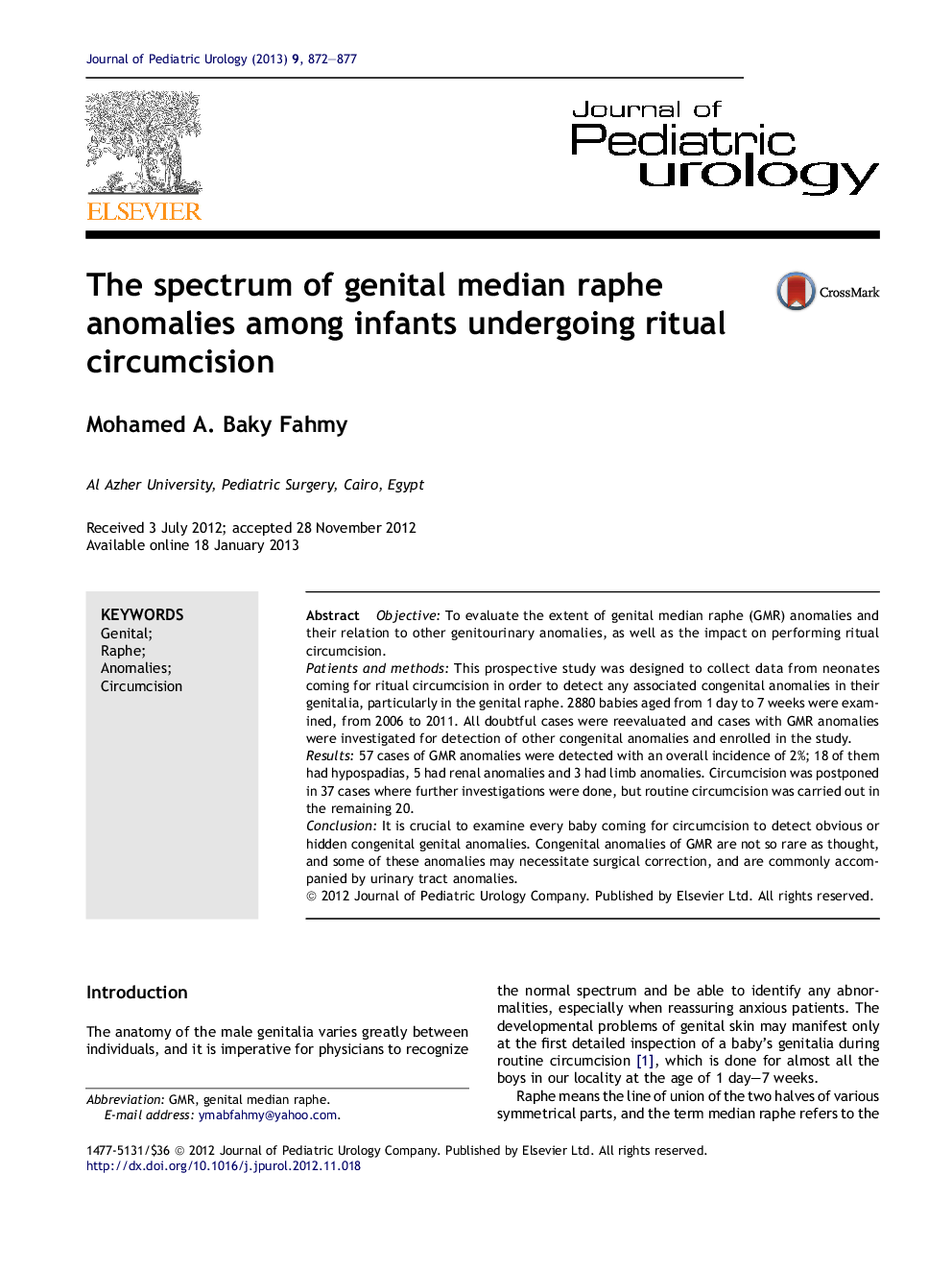| Article ID | Journal | Published Year | Pages | File Type |
|---|---|---|---|---|
| 6218556 | Journal of Pediatric Urology | 2013 | 6 Pages |
ObjectiveTo evaluate the extent of genital median raphe (GMR) anomalies and their relation to other genitourinary anomalies, as well as the impact on performing ritual circumcision.Patients and methodsThis prospective study was designed to collect data from neonates coming for ritual circumcision in order to detect any associated congenital anomalies in their genitalia, particularly in the genital raphe. 2880 babies aged from 1 day to 7 weeks were examined, from 2006 to 2011. All doubtful cases were reevaluated and cases with GMR anomalies were investigated for detection of other congenital anomalies and enrolled in the study.Results57 cases of GMR anomalies were detected with an overall incidence of 2%; 18 of them had hypospadias, 5 had renal anomalies and 3 had limb anomalies. Circumcision was postponed in 37 cases where further investigations were done, but routine circumcision was carried out in the remaining 20.ConclusionIt is crucial to examine every baby coming for circumcision to detect obvious or hidden congenital genital anomalies. Congenital anomalies of GMR are not so rare as thought, and some of these anomalies may necessitate surgical correction, and are commonly accompanied by urinary tract anomalies.
